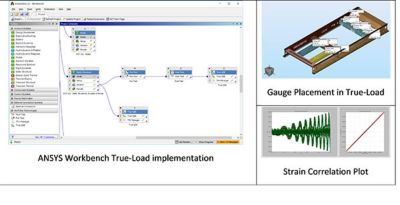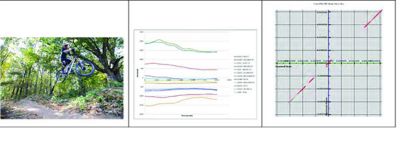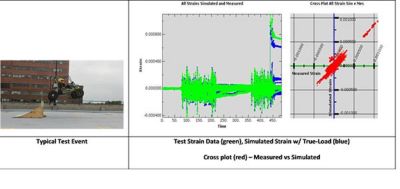-
-
Kostenlose Software für Studierende
Ansys unterstützt die nächste Generation von Ingenieur*innen
Studenten erhalten kostenlosen Zugang zu erstklassiger Simulationssoftware.
-
Verbinden Sie sich jetzt mit Ansys!
Gestalten Sie Ihre Zukunft
Stellen Sie eine Verbindung mit Ansys her, um zu erfahren, wie Simulation Ihren nächsten Durchbruch vorantreiben kann.
Länder und Regionen
Kostenlose Demoversionen
Produkte & Dienstleistungen
Lernportal
Über das Unternehmen
Back
Produkte & Dienstleistungen
Back
Lernportal
Ansys unterstützt die nächste Generation von Ingenieur*innen
Studenten erhalten kostenlosen Zugang zu erstklassiger Simulationssoftware.
Back
Über das Unternehmen
Gestalten Sie Ihre Zukunft
Stellen Sie eine Verbindung mit Ansys her, um zu erfahren, wie Simulation Ihren nächsten Durchbruch vorantreiben kann.
Kostenlose Demoversionen
ANSYS BLOG
May 25, 2017
True Load Software and Ansys Workbench Solve Difficult Strain Challenges
As the founder and president of Wolf Star Technologies and the creator of True-Load software, which calculates the loads from measured strain occurring in moving vehicles, I would like to tell you a little about the struggles and triumphs I encountered (and overcame) in my engineering career and how this led to the creation of True-Load. This has culminated in the successful integration of True-Load into the Ansys Workbench platform, so more engineers than ever will have access to my software and be able to integrate it with their Ansys simulations.
Before I was a software developer I was an engineer. My career started 30 years ago at Harley-Davidson. At H-D we were always working toward producing and delivering the best and most innovative motorcycles in the marketplace. In 2003 we were working on the prototypes of a brand new design. I was the lead Senior Project Engineer for Frames. Tools to measure loads on the frame did not exist, yet our team was tasked to produce FEA results that were meaningful to the design.
As is typical with product development programs, the timeline is so short that test results from the previous prototype level were not available to inform the next one. We were in the middle of a $1 million design-intent level build of prototypes at the plant when I received a phone call from the proving grounds. The test technician said, “Tim, you have got 4000 micro-strain on the downtubes. All of the frames you are building are no good.” I had the difficult task of telling the platform director and VP of engineering that we had to push the program back a year because of high strains in the frame.
This was all due to not understanding the loading on the frames. There were no tools to give me the complete loading to understand the results from the proving ground. I kept thinking there had to be a better way; my company was counting on it. I scoured through formulas for countless hours until I realized the answer was right in front of me the whole time; this was my “eureka” moment. I recognized that I needed to put these equations into software that every engineer could use. This could save H-D millions of R&D dollars and eliminate complete iteration cycles. I was a mechanical engineer, but I taught myself to code and wrote my own software program, which today is known as True-Load.
With the first version of the True-Load software I was able to match the proving ground strains within 2 percent in the most difficult region of the frame to correlate (the fender supports with luggage). In 2010, after twenty-two years at H-D, I decided it was time to start my own company and package True-Load in a form that could help engineers worldwide who were experiencing the same problems I had been throughout my career prior to my eureka moment.
Now, with the integration of True-Load software into Ansys Workbench through a new interface, using True-Load is extremely intuitive for Ansys Workbench users. The components of the True-Load environment are exposed directly to the Workbench environment, and can be included in Ansys simulations. This gives product developers increased power and flexibility in designing vehicles that can withstand the strains they will experience in everyday use.
Please note that the below examples are provided to detail the capability of True-Load, but are not actual depictions of True-Load in the Ansys Workbench.
Here are a few examples of published information from our customers:
- The first is from an engineer at Wisconsin based bicycle manufacturer. This company uses True-Load to understand complex loading on their frames. The engineer wrote a technical paper in 2015 about how they could capture the severe loading that occurs during jumps using their traditional method. These tests together with True-Load gave the manufacturer a better picture of the severe loading occurring in the proving ground jumps. The loading calculated by True-Load is completely different from the traditional loading used in the company’s laboratory environment. This allowed the manufacturer to improve their designs and testing methods to capture the effects of real-world loading.
- From an SAE Baja student group from the University of Wisconsin: The students turned the suspension arm of their Baja car into a load transducer using True-Load software. They then used the measured loading to drive fatigue calculations with a major FEA-based fatigue software. The students were able to reduce the weight of their suspension arm by 25 percent without compromising the durability of the arm. This is all documented in the SAE paper 2016-01-0429. It should be noted that these students had never done any FEA modeling, had never touched a strain gauge, and had never done any data collection. They did the entire project (with my coaching) in six weeks.
- An A K-Tech earth mover from a paper presented by Wayne Tanner and Cynde Murphy of Adaptive Corporation. In this project the operating loads on the earth mover are calculated. An interesting result of the study showed that the most severe loading on the earth mover occurs in transit and not during digging operations. This was totally counter-intuitive to the engineers at K-Tech. The figures below show typical plots from True-Load software: the time histories of strain from the measured testing together with a cross plot showing the measured strain on the horizontal axis and the simulated strain using the True-Load forces on the FEA model on the vertical axis. A 45 degree line shows perfect correlation.
To learn more, check out the Ansys Partner Ecosystem.



